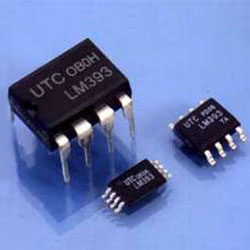This is an installment in a multi-part series. Additional segments are available here.
Noise
Low noise and low voltage don’t like each other.
Low voltage usually means portable, and portable always means low current to prolong battery life. You can design low noise and low voltage if you can be a current pig, but if you must have low noise, low voltage and low current—well, that’s difficult.
Everything works against you. The easiest way to make a really low noise op amp is to run as much current as possible through the front-end differential-pair until the silicon glows.
As unintuitive as it may be, a plain resistor, hooked up to nothing, generates noise and the larger the value the greater the noise. It is called thermal noise or Johnson noise (John Bertrand Johnson first observed thermal noise while at Bell Labs in 1927, publishing his findings as “Thermal agitation of electricity in conductors,” Phys. Rev., vol. 32, pp. 97-109, 1928), and results from the motion of electron charge of the atoms making up the resistor.
All that moving about is called thermal agitation (caused by heat—the hotter the resistor, the noisier).
Therefore quiet designs should use small resistor values, but, alas, small resistor values draw large current, and there goes the battery life. Compromise must ensue.
It is difficult to find the perfect balance between small resistor values for low noise and large resistor values for low current consumption. To make it even harder, with most analog circuits small resistor values mean correspondingly large capacitor values.
Large capacitor values do not hurt the noise performance but they are physically large and cost more, so you must make a compromise between noise, space and cost (analog design is like that).
The choice of resistor values then becomes the deciding factor in selecting the right op amp for each application. Look at the resistor values; if they are very small (like in a mic preamp) then the noise contributed by the op amp becomes critical.
However, if the application is active filters, say, and the resistors surrounding the op amp are at least 10 k ohm, then the dominate noise factor becomes their thermal noise, not the op amp’s noise. Understanding this simple fact allows you to use low-cost op amps for most of your needs.
Ultimately the performance gets down to how much voltage is available and how low is the noise floor: power supply and noise—the big two in designing quality audio for IAs.















